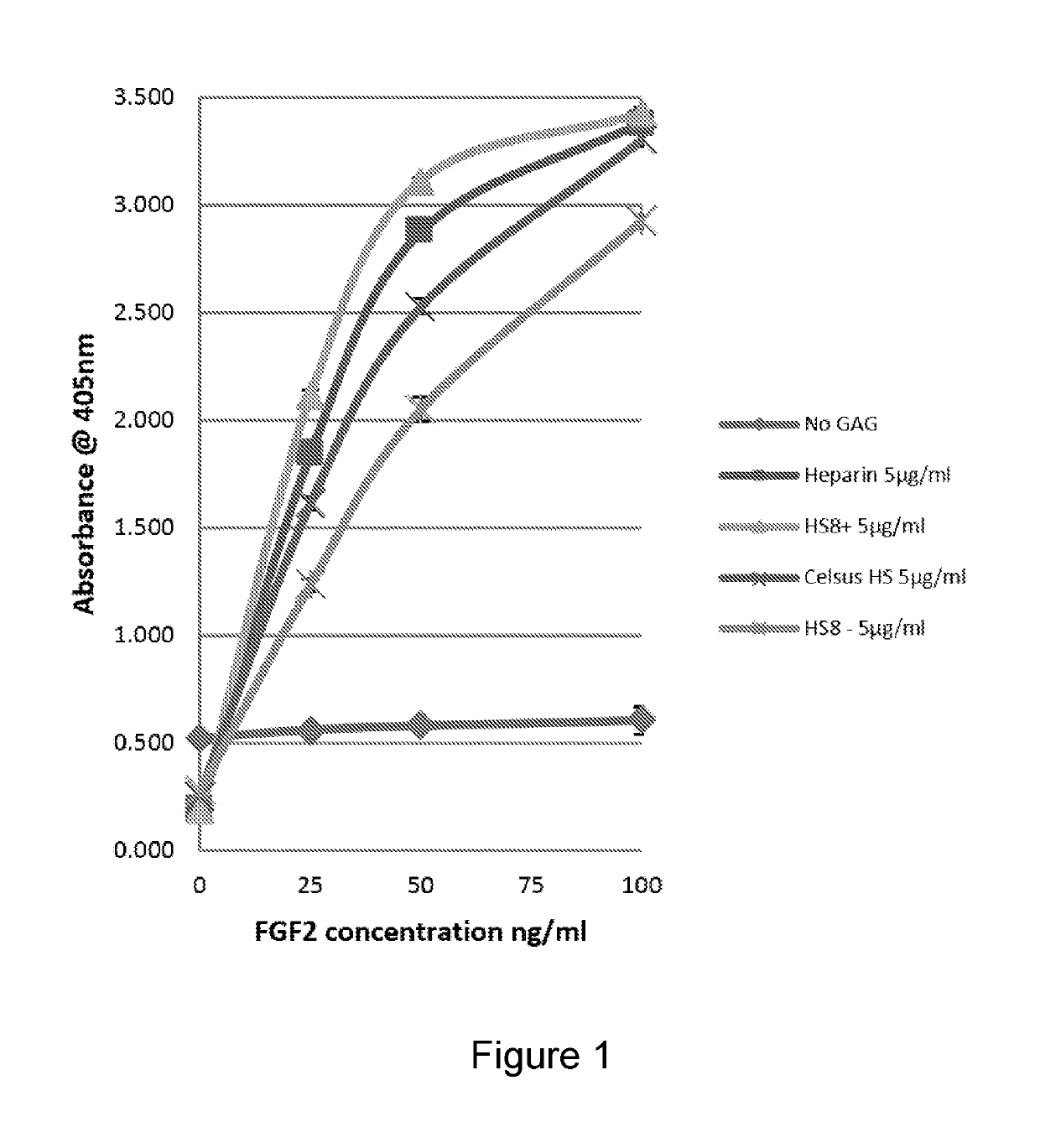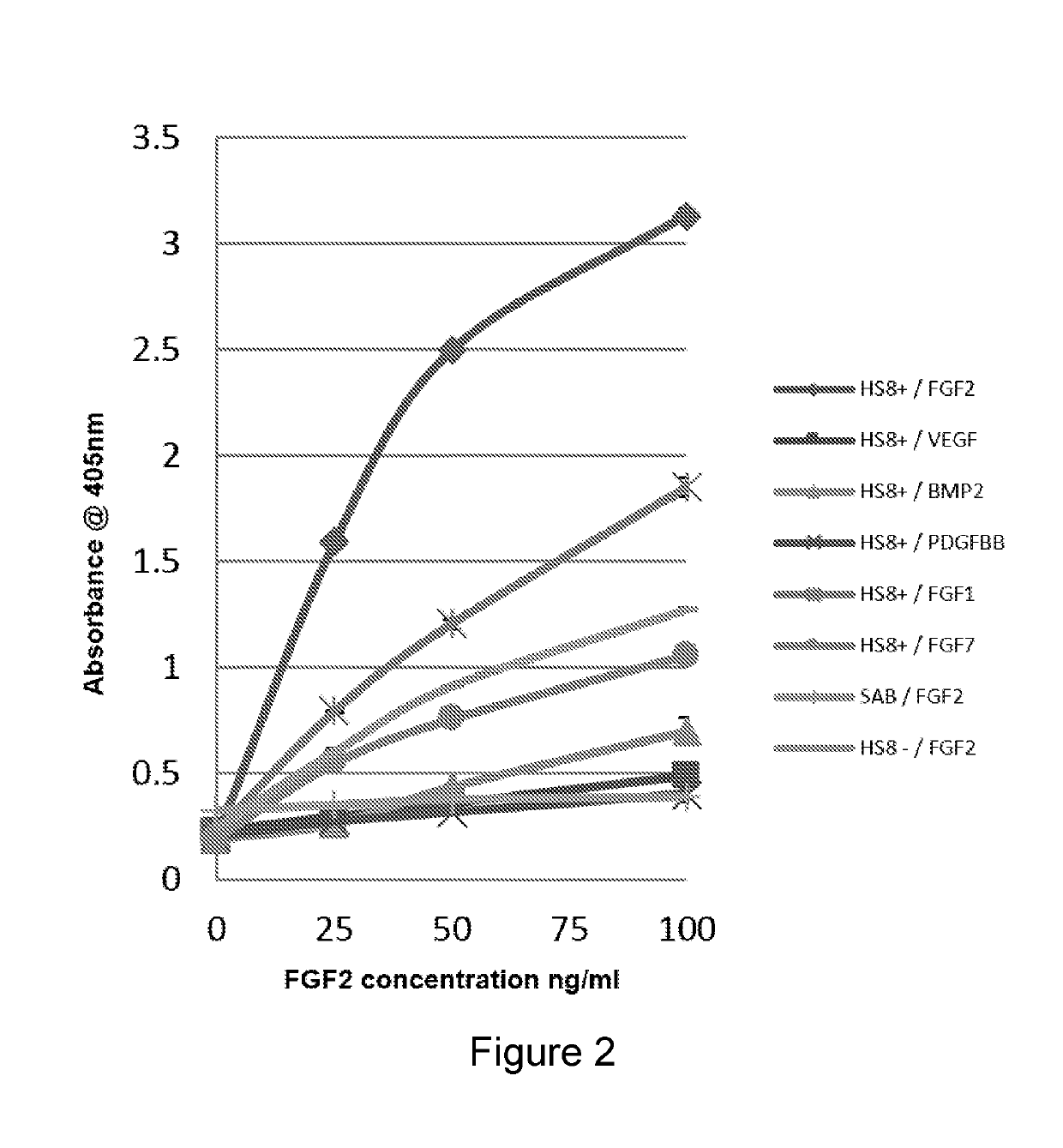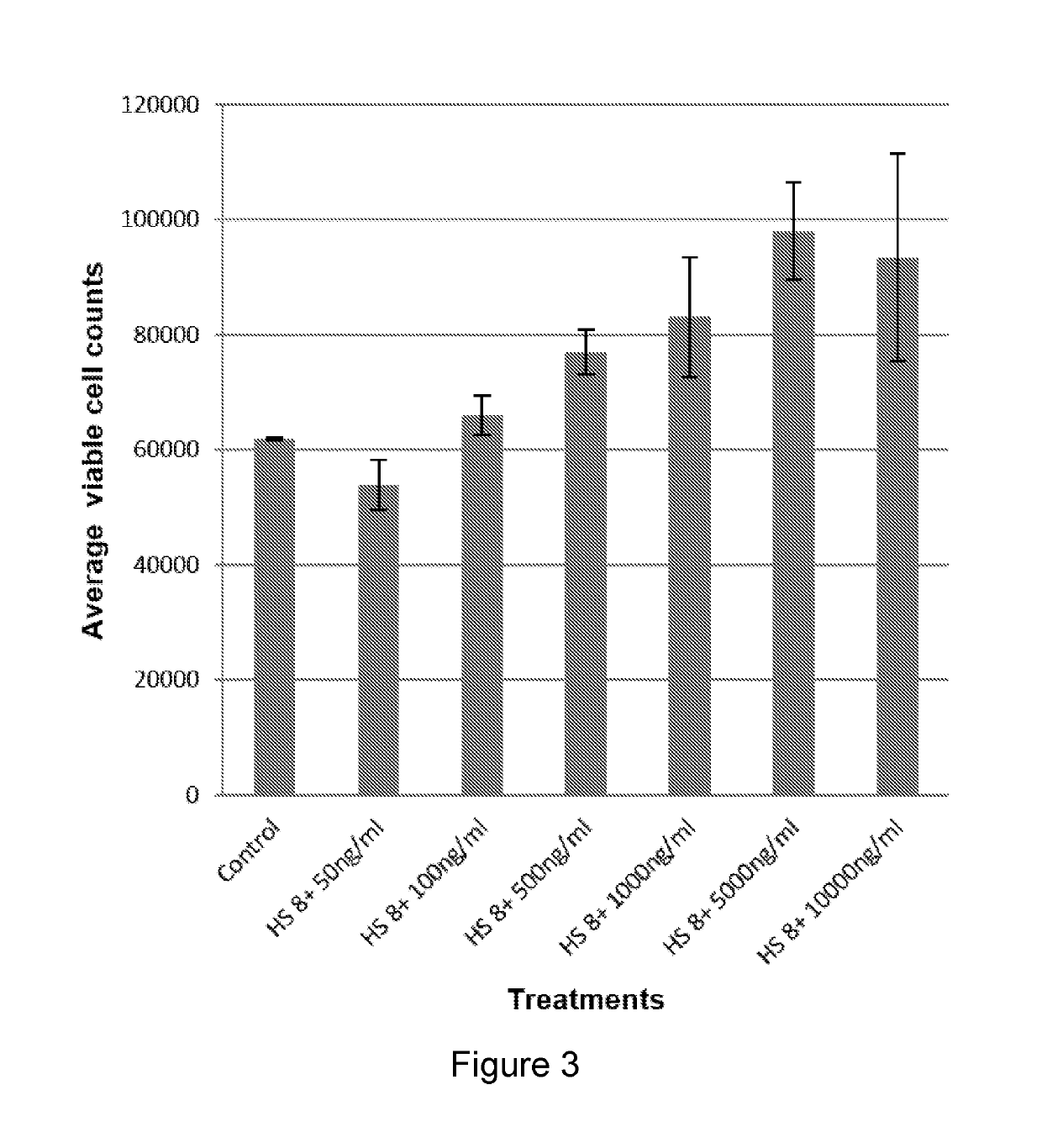Heparan sulphates for use in repair and/or regeneration of skin
a technology of heparan sulphate and skin, applied in the field of heparan sulphate, can solve the problems of high concentration, difficult use, and chronic non-healing wounds, and achieve the effect of increasing the stability of a growth factor
- Summary
- Abstract
- Description
- Claims
- Application Information
AI Technical Summary
Benefits of technology
Problems solved by technology
Method used
Image
Examples
example 1
[0432]We investigated the purification of a new FGF2 binding HS from commercially available Porcine Celsus Heparan sulphate sources suitable for scale up of heparan sulphate (HS) preparations that can be readily used in the clinic.
[0433]The Heparin binding domain (HBD) peptide sequence GHFKDPKRLYCKNGGF [SEQ ID NO:1] from FGF2 was selected (The structure of glycosaminoglycans and their interactions with proteins; Gandhi N S and Mancera R L., Chem Biol Drug Des. 2008 December; 72(6):455-82) and used to purify specific HS species binding to FGF2.
[0434]Upon synthesizing the peptide, it was subjected to the 3H Heparin assay where specific binding of 3H Heparin to the peptide soaked to a nitrocellulose membrane in a dose dependent manner was compared to the total counts of the 3H Heparin. Once the specific binding of 3H Heparin to the FGF2-HBD peptide was shown the peptide was used to pull down a specific HS from Porcine Celsus HS which binds to FGF2 by affinity chromatography. This new H...
example 2
[0439]Mesenchymal Stem Cells (MSCs)
[0440]MSCs are widely defined as plastic-adherent cells which can be directed to differentiate in vitro into osteogenic, chondrogenic, adipogenic, myogenic, and other lineages and recently, the name “multipotent mesenchymal stromal cells” was also coined to MSCs by the International Society for Cytotherapy (Zulma et al, 2011). MSCs are been found in bone marrow, adipose tissue, dermal tissue, intervertebral disc, amniotic fluid, various dental tissues, human placenta and cord blood (Si et al, 2011 and Zulma et al, 2011). The therapeutic potential of MSCs have been recognized and been used in many clinical applications such as bone tissue regeneration and non skeletal tissue regenerations. In recent years the immunosuppressive and anti-inflammatory effects of MSCs were described. This is due to MSCs weak immunogenicity by expressing low levels of major histocompatibility complex-I molecules (MHC-1) on their cell surface, ability to suppress the acti...
example 3
[0497]The binding capacity of different GAGs for FGF2 was assessed using GAG-binding plates (Iduron). The binding capacity of different GAGs for the heparin-binding growth factors (HBGFs) BMP-2, FGF1, FGF2, FGF7, PDGF-BB and VEGF was also assessed using GAG-binding plates (Iduron). The materials and methodology used are described below.
[0498]HS8 was found to bind FGF-2 almost as well as heparin, and certainly better than the raw starting Celsus HS and the HS8− flow through fraction (FIG. 15)
[0499]HS8 (HS8+) preferentially binds FGF2 over all the other HBGFs tested and has a higher binding capacity for FGF2 than heparin, i.e. HS8 exhibits specific binding to FGF2. HS8− and raw starting Celsus HS displayed little preference for any of the HBGFs tested (FIG. 16).
[0500]Materials[0501]1. Standard Assay Buffer (SAB)—100 mM NaCl, 50 mM sodium acetate, 0.2% v / v tween 20, pH 7.2[0502]2. Blocking buffer—0.4% Fish gelatin (Sigma Cat No. 67041)+SAB[0503]3. GAG binding Plate (Iduron, UK)[0504]4....
PUM
| Property | Measurement | Unit |
|---|---|---|
| molecular weight | aaaaa | aaaaa |
| concentration | aaaaa | aaaaa |
| concentration | aaaaa | aaaaa |
Abstract
Description
Claims
Application Information
 Login to View More
Login to View More - R&D
- Intellectual Property
- Life Sciences
- Materials
- Tech Scout
- Unparalleled Data Quality
- Higher Quality Content
- 60% Fewer Hallucinations
Browse by: Latest US Patents, China's latest patents, Technical Efficacy Thesaurus, Application Domain, Technology Topic, Popular Technical Reports.
© 2025 PatSnap. All rights reserved.Legal|Privacy policy|Modern Slavery Act Transparency Statement|Sitemap|About US| Contact US: help@patsnap.com



